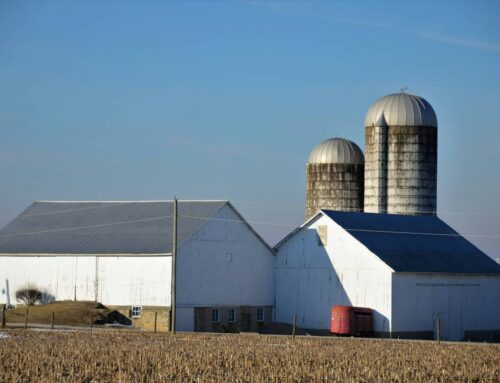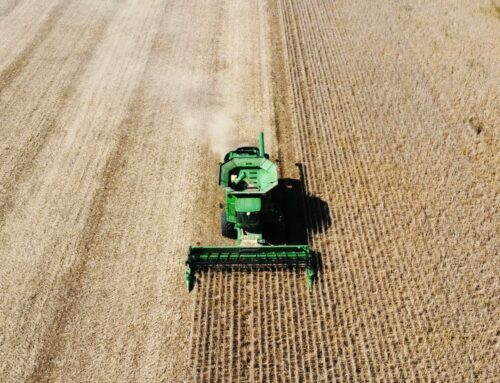The Trump Administration announced today it will tap a Depression-era law to unleash $16 billion worth of deficit-financed federal spending and direct it to farming and ranching businesses seeing economic damage due to the president’s trade war with China.
The agriculture sector has borne the brunt of China’s retaliatory tariffs, put in place in response to U.S. imposition of tariffs on Chinese goods. This has contributed to steep drops in prices for numerous crops and livestock, and an increase in discord amongst agricultural businesses experiencing lower than expected incomes. With no hope of a new trade deal with China on the horizon, the United States Department of Agriculture announced today it will dole out a second round of hush money to buy political goodwill among this key constituency to the president’s reelection hopes.
Full details have not been released, but the program will be much like efforts in 2018. But with a bigger taxpayer tab and with more crops benefiting from this backdoor revival of the direct payment program.
Market Facilitation Program – $14.5 billion
The bulk of the payments will be in cash income subsidies sent directly to farming and ranching businesses. Unlike the first round of payments, USDA will use a more complicated calculation for the payment to row crop producers.
- MFP eligibility is extended to all covered commodities, crops that are currently eligible for other Farm Bill subsidy programs (Agriculture Risk Coverage and Price Loss Coverage). It is also extended to growers of alfalfa hay and dried beans.
- Payments will be made on the total amount a business plants to these crops multiplied by an individual county rate.
- Total eligible payment acres cannot exceed the total acres planted in 2018.
This program sounds like a backdoor revival and expansion of the discredited direct payments program where farm businesses received a payment every year regardless of market conditions. But with a few twists that make it more confusing and more costly.
New crops are eligible for these direct payments
According to USDA “Tree nut producers, fresh sweet cherry producers, cranberry producers, and fresh grape producers will receive a payment based on 2019 acres of production”.
- Almond and sweet cherry producers received MFP payments in 2018. Cranberries, fresh grapes, and other tree nuts did not (though growers of cranberries, grapes, hazelnuts, macadamia, pecans, pistachios, and walnuts all benefited from extra USDA purchases under the Food Purchase and Distribution program).
- Presumably this means these other tree nut producers will receive direct income subsidies.
Outstanding questions
- USDA could simply make payments to farmers holding so-called base acreage to avoid influencing planting decisions. Extending coverage to all Farm Bill “covered commodities” should roll in the bulk of base acres. But using plantings instead of base acres and adding alfalfa and beans will extend payment eligibility to farm businesses growing commodities on land that is not so-called base acreage as well as to businesses that haven’t grown a covered commodity on base acreage. So farmland not currently eligible for ARC/PLC could become eligible for MFP.
- How will the county payment rate be calculated? If 60 percent of the reported plantings for a county are corn, is 60 percent of the payment formula the corn payment rate ($0.04 cents)? This could lead to wildly different payment rates county-to-county.
- Presumably the “total eligible payments” is a national or possibly county-wide restriction and not done on an individual farm basis.
The devil will be in the details, so we’ll have to wait and see.
Food Purchase and Distribution Program — $1.4 billion
The USDA will spend tax dollars purchasing “surplus” commodities and distributing them to food banks, schools, and other outlets serving low-income individuals. The USDA did this in 2018 as well, and in fact is still in the process of purchasing these “surplus” commodities.
- This is an increase from the $1.2 billion directed to these purchases in 2018.
- USDA will purchase fruits, vegetables, some processed foods, beef, pork, lamb, poultry, and milk.
- Lamb and poultry would be new additions to this program.
- Various processed foods could open the door to numerous products beyond the orange juice, peanut butter, and multiple dairy products USDA is currently purchasing.
Agricultural Trade Promotion Program (ATP) – $100 million
USDA will spend $100 million to assist in developing new markets to exports.
- On January 31, the USDA announced $200 million in awards to 57 organizations, including the Brewers Association, Inc., the Pet Food Institute, the Raisin Administrative Committee, and the Wine Institute.
- An extra $100 million to develop markets is a mere pittance as long as President Trump’s tariff-focused trade war locks producers out of billions in sales in China.
Confusing. Costly. Cronyistic. Entirely unwieldy. And no end in sight. Now you know why we compare it all to Frankenstein’s monster. It is a creature that strikes fear in both fiscal conservatives and farmers.










